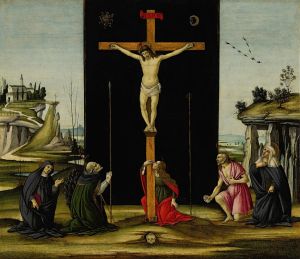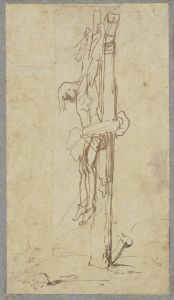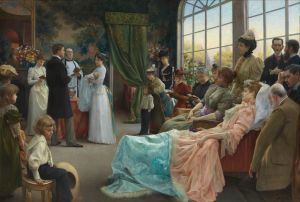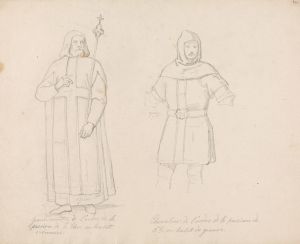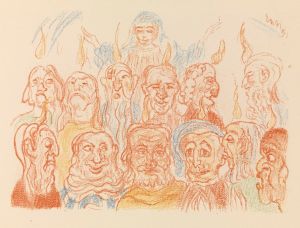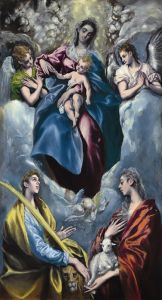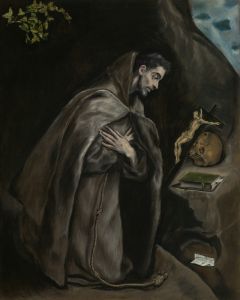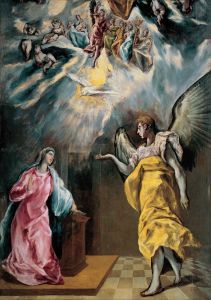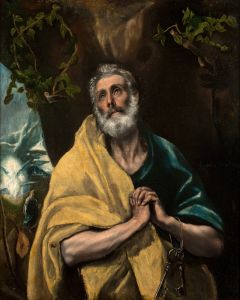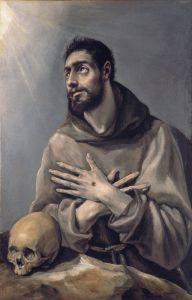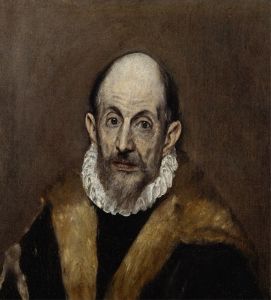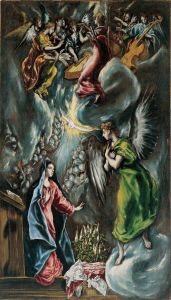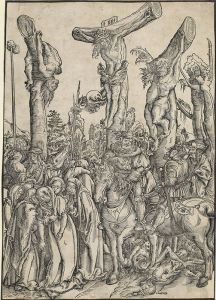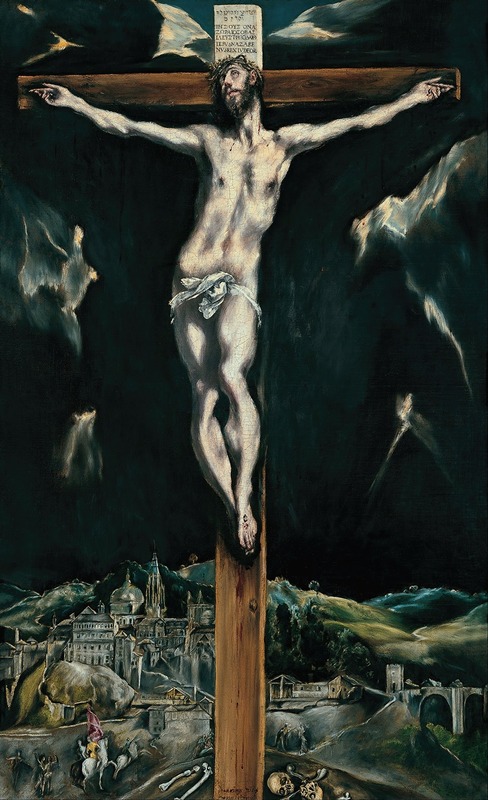
Christ Crucified With Toledo In The Background
A hand-painted replica of El Greco (Domenikos Theotokopoulos)’s masterpiece Christ Crucified With Toledo In The Background, meticulously crafted by professional artists to capture the true essence of the original. Each piece is created with museum-quality canvas and rare mineral pigments, carefully painted by experienced artists with delicate brushstrokes and rich, layered colors to perfectly recreate the texture of the original artwork. Unlike machine-printed reproductions, this hand-painted version brings the painting to life, infused with the artist’s emotions and skill in every stroke. Whether for personal collection or home decoration, it instantly elevates the artistic atmosphere of any space.
"Christ Crucified with Toledo in the Background" is a notable painting by the renowned artist El Greco, whose real name was Domenikos Theotokopoulos. El Greco was a prominent painter of the Spanish Renaissance, known for his distinctive style that combined elements of Byzantine traditions with Western painting techniques. This particular artwork is a testament to his unique approach and his ability to blend religious themes with local landscapes.
The painting depicts the crucifixion of Jesus Christ, a central theme in Christian art, and is set against the backdrop of the city of Toledo, Spain. Toledo was El Greco's adopted home and a significant cultural and religious center during his time. The inclusion of Toledo in the background is a characteristic feature of El Greco's work, as he often integrated the city into his religious compositions, thereby grounding the divine in a recognizable earthly setting.
In "Christ Crucified with Toledo in the Background," El Greco portrays Christ on the cross with an elongated body and expressive features, a hallmark of his style. The figure of Christ is depicted with a sense of spiritual intensity and emotional depth, emphasizing his suffering and sacrifice. The dramatic use of light and shadow enhances the emotional impact of the scene, drawing the viewer's attention to the central figure of Christ.
The background features a panoramic view of Toledo, rendered with a high level of detail and accuracy. The city's distinctive skyline, with its prominent architectural landmarks, is visible, providing a striking contrast to the somber foreground. This juxtaposition serves to highlight the universality of Christ's sacrifice, connecting it to the specific cultural and geographical context of Toledo.
El Greco's use of color in this painting is particularly noteworthy. The somber tones of the crucifixion scene are contrasted with the vibrant hues of the landscape, creating a dynamic visual tension. The sky, often depicted in dramatic and turbulent forms in El Greco's work, adds to the overall emotional intensity of the painting.
"Christ Crucified with Toledo in the Background" exemplifies El Greco's ability to merge the spiritual with the earthly, creating a composition that is both deeply religious and intimately connected to the world he inhabited. The painting reflects his mastery of form, color, and composition, as well as his profound understanding of the spiritual themes he sought to convey.
El Greco's work, including this painting, had a significant influence on the development of Western art. His distinctive style, characterized by elongated figures, dramatic use of color, and expressive compositions, paved the way for later movements such as Expressionism and Cubism. Today, "Christ Crucified with Toledo in the Background" is celebrated as a masterpiece of religious art and a testament to El Greco's enduring legacy as one of the great painters of the Renaissance.





